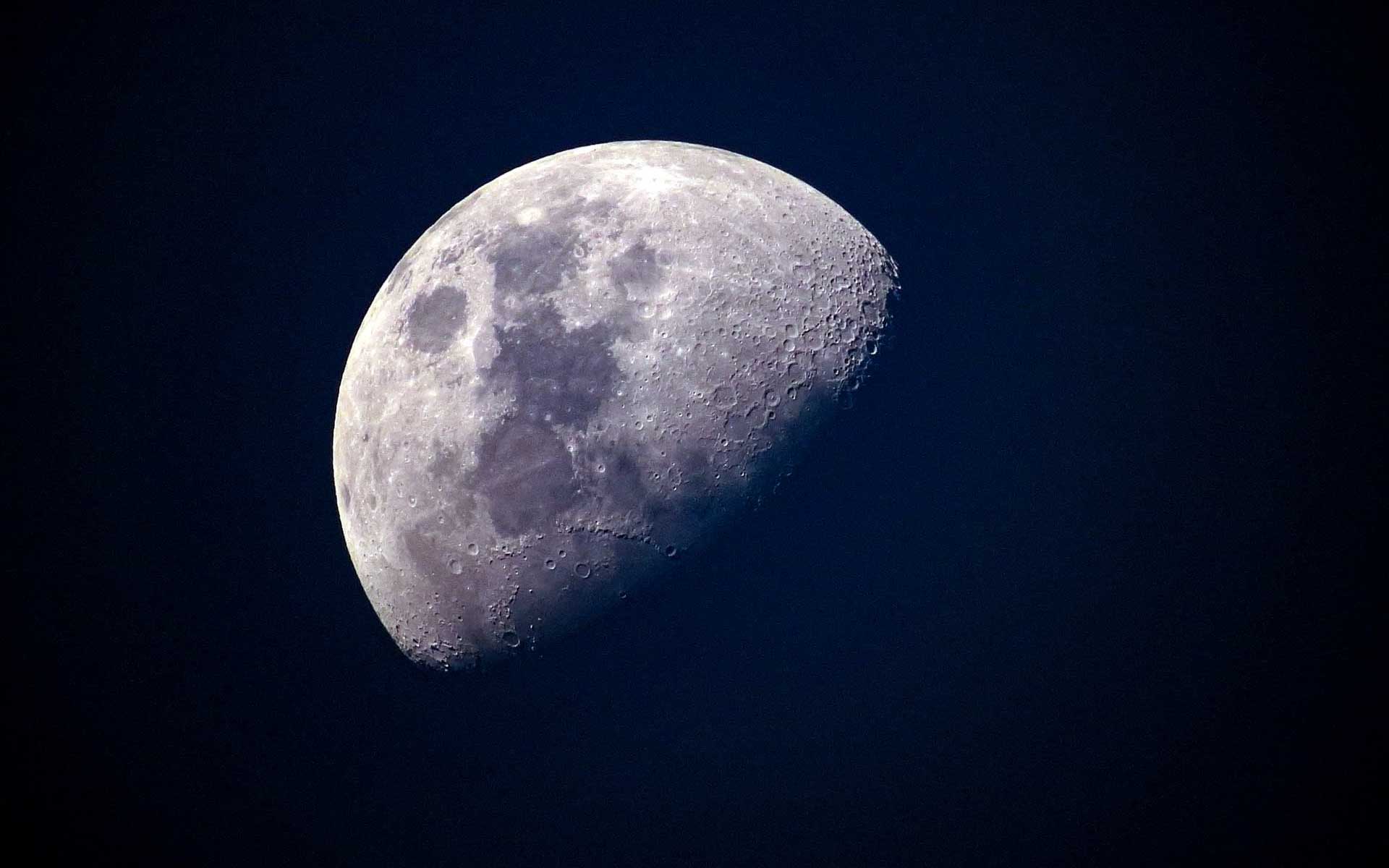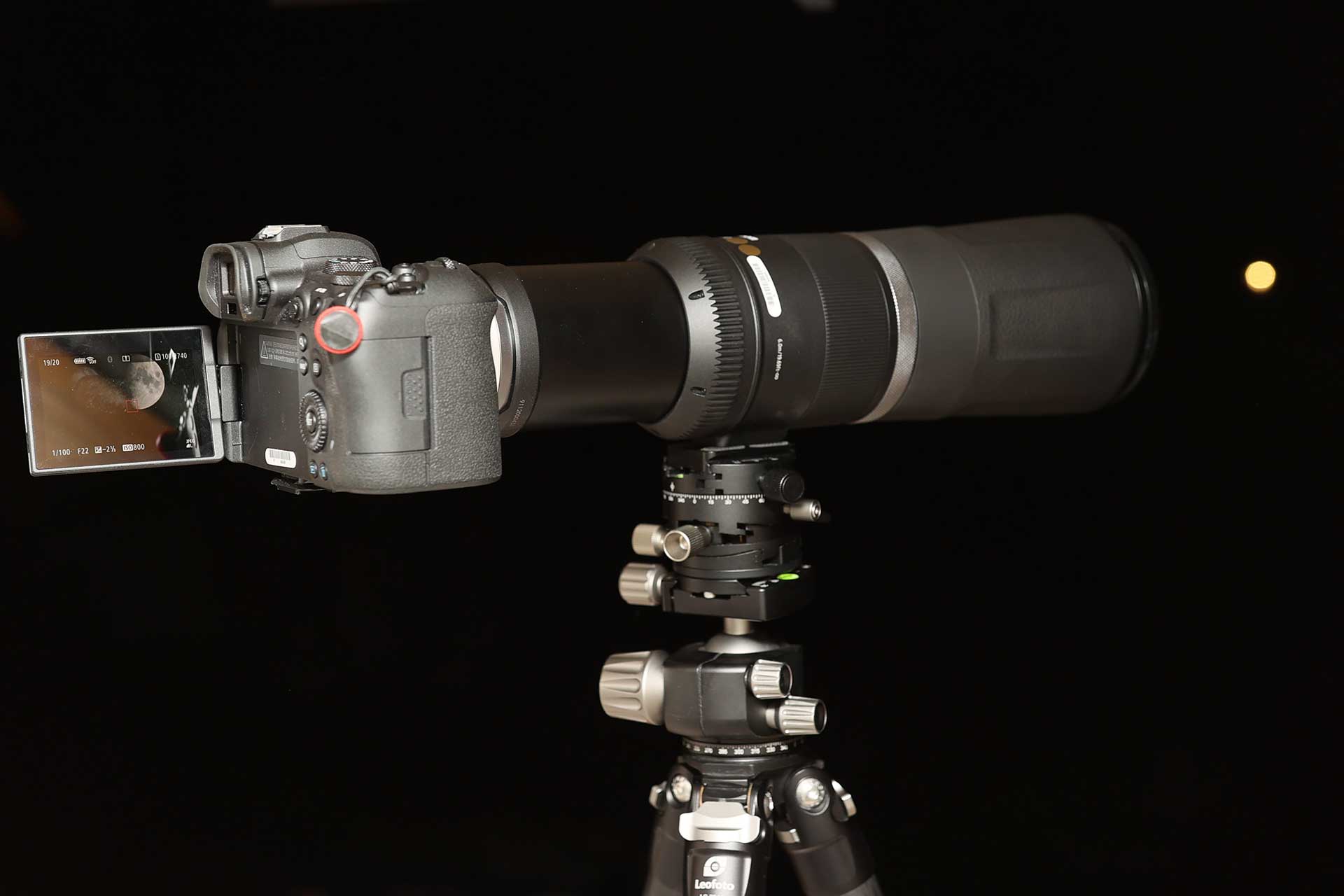How to take great pictures of the moon
Reading time approx. 5 minutes
Helpful?

How to take great pictures of the moon
Reading time approx. 5 minutes
Helpful?
This tip was inspired by a poem. Olaf Franke explains what equipment you need and what settings are best for photographing the moon.
"The moon has risen, the golden stars are shining, bright and clear in the sky": the first line of the poem by Matthias Claudius from 1779 describes the first important prerequisite for a successful lunar photograph: a clear, largely cloud-free sky. If you want to photograph the Earth's satellite, which is on average 384,400 kilometres away, you think of the huge telescopes that protrude from the roofs of observatories.
Ideally, you would use focal lengths of 2,000mm or more for a full-frame image of the moon. But you don't have to go that far. Shorter focal lengths can also be used to make the moon stand out. If you own an EOS R camera, the two new super-telephoto lenses with focal lengths of 600mm and 800mm are ideal, as they can be collapsed for easy transport on a longer moon excursion. Even if the moon cannot be photographed in full frame: The high-resolution sensors on Canon cameras make it easy to crop the image.
If you have an EOS camera with an APS-C sensor, you can even use shorter focal lengths thanks to the 1.6 crop factor. For example, a 300mm EF lens on an EOS 90D produces the same effect as a 480mm lens on a full-frame EOS camera.
What settings should be used to take the picture? First of all, the moon is travelling faster across the sky than you might think. The shutter speed should therefore not be less than 1/250th of a second to avoid blurring caused by movement. You can control the exposure with an appropriate aperture and ISO combination.
Camera exposure meters are often unable to cope with the huge difference in brightness between the black sky and the glowing surface of the moon, so the moon will appear too bright.
So switch from automatic to manual mode, which is marked 'M' on your mode dial. ISO values between 100 and 400 and an aperture between 8 and 11 have proved to be a good starting point for exposure. You can 'play' with the combination of values, more or less, and have the result displayed in Live View or after exposure.
You can also focus manually in Live View mode. The various focus aids, such as focus peaking (magnifying a section of the image) or the focus assistants on mirrorless cameras, are very helpful here. In most cases, even the autofocus works reliably, provided that a measuring point is correctly placed on the edge of the moon.
Now, just to be on the safe side, switch off any image stabilisers (so that you are not trying to stabilise something that cannot be stabilised) and then release the shutter 'vibration-free' using a remote or timer release.
By the way, the poem by Matthias Claudius continues as follows "The forest stands black and silent, and the white mist rises beautifully from the meadows".
What the poet was probably trying to say is that the most fascinating images of the starry sky are created when you include more of the sky than 'just' the good old moon.
